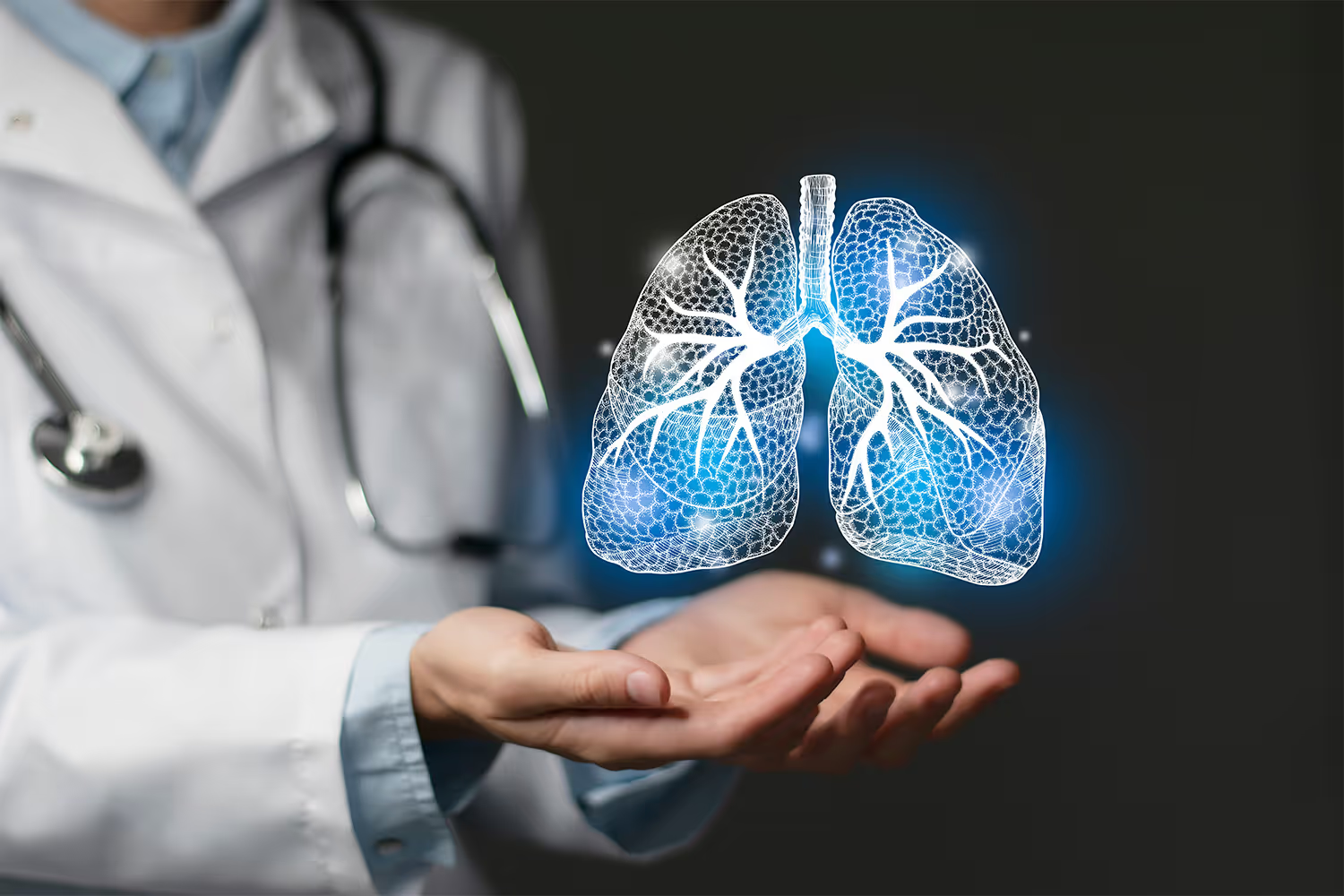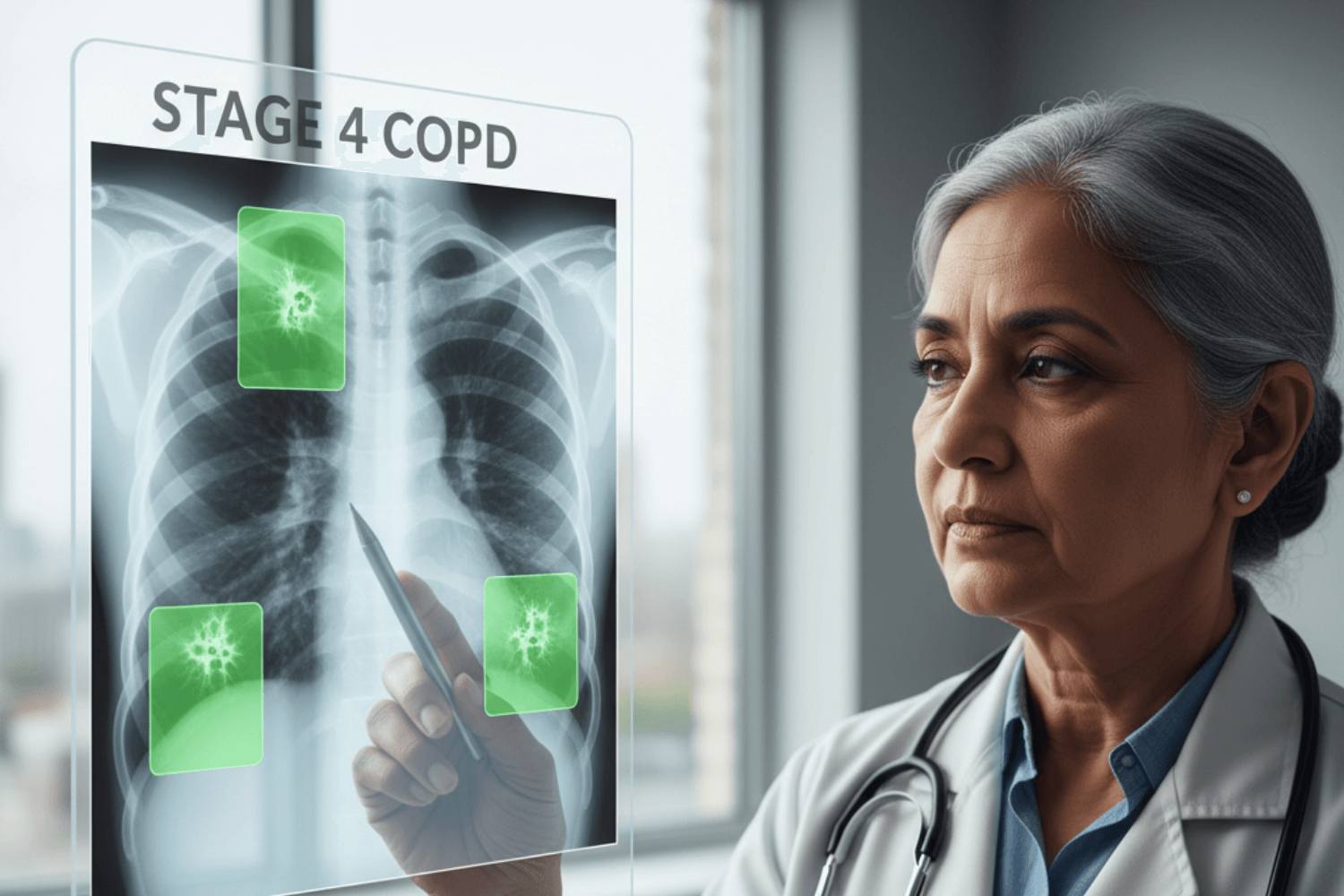
Chronic obstructive pulmonary disease, more commonly referred to as COPD, is a lung disease that is the third leading cause of death worldwide, according to experts.
COPD is characterized as a chronic and progressive pulmonary disease that leads to permanent damage to the lungs. This damage contributes to difficulty breathing, poor oxygen saturation, and shortness of breath which can result in difficulty performing everyday activities.
Below is a closer look at what causes COPD, the different stages of COPD, how COPD is diagnosed, as well as how this disease can be addressed through treatment and pulmonary rehab.
What Causes COPD?
COPD is a term utilized to describe a wide variety of lung diseases and disorders that cause a problem in the lung's ability to properly ventilate air to facilitate gas exchange and oxygenate your blood. Some diseases that fall under the umbrella of COPD include chronic bronchitis and emphysema.
COPD is mainly caused by irritation and damage to the small air sacs in the lungs where gas exchange occurs. Exposure and inhalation of certain chemicals, allergens, pollutants, and smoke can all irritate these delicate sacs known as alveoli and contribute to COPD over time. Once COPD has developed, these irritants may exacerbate COPD and cause unwanted flare-ups.
Environmental factors certainly play a role in the development of COPD, but some other factors can contribute to COPD, including genetics, the presence of other medical conditions, age, and poor lifestyle habits.
What Are the Four Stages of COPD?
COPD tends to be a progressive and chronic disease, and for that reason, it is important to differentiate early-stage COPD from end-stage COPD to ensure people are getting the appropriate treatment and to allow healthcare professionals to understand how progressed the lung damage is.
The Global Initiative for chronic obstructive lung disease (GOLD) was established in 1997 in response to an increased awareness of COPD as a public health concern. From this organization, a set of guidelines has been created to help standardize the classification of COPD stages and consolidate the current best practices for managing COPD.
Below is a closer look at the four stages of COPD and what differentiates them.
Mild
Mild COPD, also referred to as stage 1 COPD, is the initial stage of COPD progression. Some common symptoms associated with this early stage include shortness of breath worsened with physical activity, a chronic cough, and fatigue. These symptoms can be insidious, and many people won’t think anything of them as they tend to be associated with aging.
COPD diagnosed in early stages tends to have a better prognosis than those diagnosed in more progressed stages of the disease. A diagnosis of mild COPD can be frightening, but it can also be reassuring knowing that there are things you can do and treatments that may help to improve your quality of life and potentially slow the progression.
Moderate
Moderate COPD is a more progressed stage than that of mild COPD. You can expect many of the same symptoms of stage 1 COPD but with slightly worsened symptoms. Chronic coughs tend to get worse and occur more often with moderate COPD and the expulsion of more mucus and phlegm with coughing.
Shortness of breath following physical exertion may also become more noticeable and exacerbated with less demanding movements. Chest tightness and wheezing may also be present.
Moderate COPD is a more progressed form of COPD, but there are still interventions such as pulmonary rehab and medical treatments such as the use of a bronchodilator to help slow the disease progression and allow people to have a decent quality of life.
Severe
Severe COPD enters the stages of COPD that begin to drastically impact the quality of life and the ability of the lungs to keep up with the body. Resting blood oxygen saturation in individuals with severe COPD tends to be lower, and the ability to perform everyday tasks involving mobility or physical activity tends to be diminished due to worsening oxygen availability to the body.
Exacerbations and flare-ups of severe COPD can also become more severe, requiring hospitalizations in certain cases. Treatment options for severe COPD are limited, and the main goal in this late stage of COPD is to try and keep oxygen saturation above 88%.
Increased resistance e in the lungs may also cause pulmonary hypertension, which over time can lead to a weakening of the right side of the heart. Over time this can lead to right-sided heart failure, which can cause several prominent issues, such as edema in the lower extremities.
Very Severe
Very severe COPD, also known as stage 4, is late-stage COPD. During this stage, it can be immensely difficult to perform everyday tasks without assistance. Many individuals with late-stage COPD need oxygen therapy as they cannot adequately keep up with the oxygen demands of the body due to impaired lung function.
Those with very severe COPD are likely to exhibit more exaggerated symptoms of other stages. This means that flare-ups may become worse or more frequent, mucus production may increase, and shortness of breath may become more consistent.
Individuals with very severe COPD can also develop difficulty swallowing and eating since these tasks require you to stop breathing for a moment which can be difficult for an individual already having difficulty maintaining adequate oxygen saturation.
How Is Each COPD Stage Diagnosed?
COPD is a complex pulmonary disorder, and there are many different techniques a pulmonologist or healthcare provider may use to provide a definitive COPD diagnosis. Some COPD assessment tests that may be utilized include a lung function test, quality of life assessment, exercise testing, and imaging tests.
One of the most crucial diagnostic tests utilized to get a COPD diagnosis is known as the forced expiratory volume in one second (FEV1). The test utilizes a device known as a spirometer which measures the amount of air that you are able to forcefully exhale.
This figure is then compared to what your FEV1 should be based on an equation that predicts it by taking your age, sex, height, and weight. These two figures are compared to one another to provide a percentage. The lower the actual FEV1 is to the predicted value, the lower the percentage.
The percentage of the predicted value is a key statistic utilized to differentiate between COPD stages with the GOLD staging system. Below is a look at the specific GOLD staging with FEV1 percentages.
- Mild COPD (Measured FEV1 ≥ 80% predicted)
- Moderate COPD (50% ≤ Measured FEV1 < 80% predicted)
- Severe COPD (30% ≤ Measured FEV1 < 50% predicted)
- Very severe (end-stage) COPD (Measured FEV1 < 30% predicted)
How Can COPD Be Addressed?
The first step for addressing COPD is to determine the cause. The leading cause of COPD is a history of smoking or constantly being exposed to secondhand smoke. If you have a smoking habit, it is crucial to get help for cessation.
Individuals that quit smoking with an early COPD diagnosis have much better long-term outcomes than those that continue to smoke. Smoking cessation is not a cure for COPD, but it can help to avoid further damage to the lungs and further disease progression.
COPD can also be addressed through a special rehab called pulmonary rehabilitation. Pulmonary rehab is a multidisciplinary approach that can help improve the pulmonary and cardiovascular health of an individual through exercise training, health education, and support. These programs can be immensely helpful for individuals with COPD.
A 2021 study found that individuals that started a pulmonary rehab program experienced fewer readmissions than those that were discharged and chose not to do pulmonary rehab.
Patient acceptance and adherence to a pulmonary rehab program aren’t always the easiest due to some of the barriers that exist, such as the need to drive into a physical rehab center, and this is where Carda Health comes in.
Carda Health is a virtual pulmonary and cardiac rehab program that offers the same great program from the comforts of your own home. The process for Carda Health enrollment is easy, and if eligible, you will be paired with an exercise physiologist and a team to walk you through exercises, dietary planning, and education on how you can best support your cardiopulmonary health.
The Bottom Line
COPD is a chronic and progressive lung disease that has four stages. These stages denote how progressed a disease is and is determined based on a metric known as FEV1, which is how well a person is able to forcefully exhale air in a second.
Since COPD is a chronic progressive disease, there is no cure, but there are things that can be done to help improve the quality of life of an individual dealing with COPD and potentially slow the progression, including pulmonary rehabilitation. Carda Health is an excellent flexible option for those that may benefit from cardiac or pulmonary rehabilitation.
With the entire platform being virtual, you can make your rehab program work for you and your schedule with little hassle. This can make it so you are able to focus more on your health and improve your standard of cardiopulmonary health and less time dealing with the hassles of a traditional in-person program.
Sources:
Chronic obstructive pulmonary disease (COPD) - Criteria | BMJ Best Practice US







